How can I learn more about computers?This page contains information for those who want to gain more knowledge about their computer or doesn't know where to start. We have created this page in order to serve as a quick reference and comprehensive summary of everything computer-related, as the computer is such a complicated mechanism. Also, you will find links to pages that describe further information related to computers. Tip See our computer definition if you merely want to know about computers in general. What makes the computer work?Transistors There are millions of transistors available in your computer that are the fundamental components of all microchips, as well as the central processing unit (CPU). 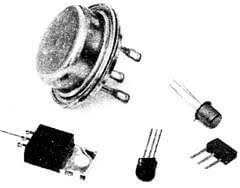
When transistors are stacked in different ways, they generate logic gates, which may subsequently be coupled to form half adders and eventually complete adders. This is what makes your computer's machine language for communicating as well as work with Boolean logic. Machine language Binary, or a series of 0s and 1s or Off and On electrical impulses, is used by all computers and other equipment. A high-level programming language is used to write all of the software on your computer; a language can be understood by a human. When the program is finished, it is compiled into a low-level machine language, which can be read by computers. 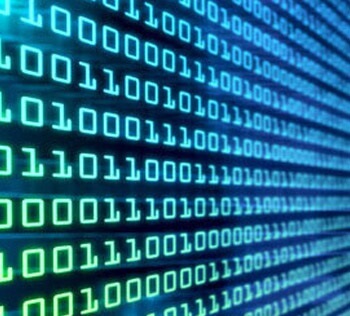
ASCII codes A bit is a binary 0 or 1 value, and eight bits (one byte) are used to create each letter, number, or character. One byte of binary ASCII codes is a standard method to store and modify text. For instance, the ASCII code decimal value of the lowercase letter "a" is 97, or 01100001 in binary. Unicode Only 256 characters are supported by ASCII, which is insufficient order to represent all of the symbols used in computers and for several languages. Unicode was established to resolve the solution to this challenge. For instance, almost one million characters may be held by the 16-bit version of Unicode. Memory Computer memory, which has the potential to hold information temporarily. For case, RAM (random-access memory) used to store running applications in the computer, which is a volatile memory that means all data in the memory is lost when the computer is shut off. Storage Computers need to hold data or information as they cannot be turned on all of the time. For instance, a hard drive is a non-volatile type of memory that has the capability to store information even when the computer is shut off. A file is a sort of data that is saved on a computer; a file can be a document, a video, a picture, audio, or any other kind of data. All of these files are kept on a hard drive. Tip Memory and storage are frequently confused by inexperienced computer users or new computer users. However, these memories are not the same. As compared to storage capacity, your computer always has less memory. Different media types and technologies have been utilized in order to store data as computers have evolved. There is a list given below that contains some of these storage devices ranging from old to latest.
Memory and storage capacity Abbreviations like KB (kilobyte), MB (megabyte), GB (gigabyte), and TB (terabyte) (terabyte) are used to write the entire capacity of all memory and storage. Cache Cache memory is another kind of memory that is much faster. The main function of cache memory is to store recently accessed portions of memory, which is a small amount of memory kept on or near the CPU. When the CPU requires information, it's loaded from the cache almost immediately if it is in the cache, rather than having to wait for slower RAM. ROM ROM (read-only memory) is another sort of memory that contains data that can only be read. A PROM (programmable read-only memory) is contained by most modern computers, which can be reprogrammed with a firmware update if necessary, even it is also read-only memory. Input and output Humans interact with computers with the help of input devices such as a mouse and keyboard. Sensors can also provide data to computers. Then that inputted data is processed by the computer and delivers the updated or new data to an output device, such as a monitor. Another output device is the printer, which has the potential to print tangible copies of papers and images stored on the computer system. Input/output, often known as the I/O process, is the process of inputting and outputting data. 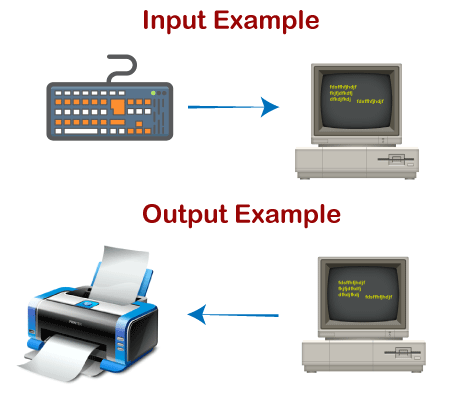
Hardware and software Software installed on a computer, such as the Internet browser you are using to access this page, is the combination of instructions and code. A tangible device that you can touch, such as the monitor or screen you are using in order to read this page, is known as hardware. Computer hardwareCPU The central processing unit (CPU) or processor is the mind of the computer, which is responsible for managing all instructions received from the computer's hardware as well as software. There are two main components available in the CPU, which are as follows:
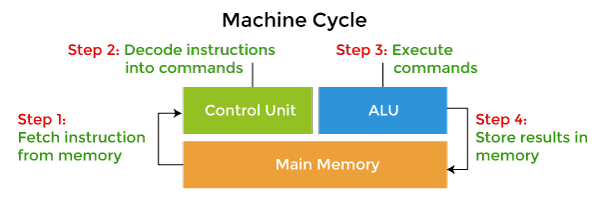
Motherboard The motherboard is responsible for holding and connecting everything together in the computer, which is the largest circuit board in the computer case. Components like as your CPU (central processing unit) and RAM (random access memory) would be unable to connect without the motherboard. A motherboard for a desktop computer is shown below. 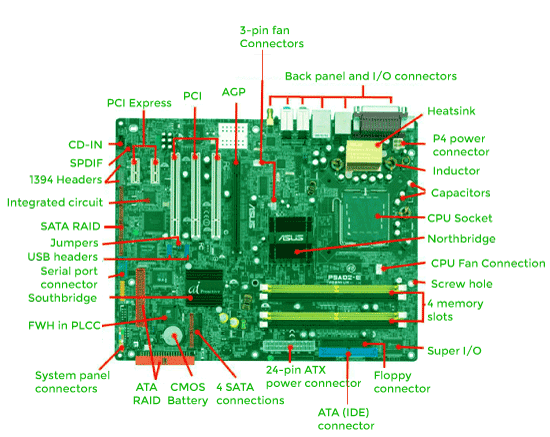
Expansion cards An expansion card, also known as an interface adaptor, add-on card, internal card, expansion board, or card, is a PCB that is added to a computer to expand its capabilities. An expansion card fits into a desktop computer's expansion slot. Examples of expansion cards include modems, sound cards, video cards, network cards that adds new features to a computer. Each expansion card can have the ability to communicate with the motherboard by using a different type of connector (e.g., AGP, PCI, PCIe). Additional cards can be inserted into the PC Card slot on some laptops. Furthermore, onboard equipment, such as onboard sound and network capabilities, may be incorporated onto the motherboard of computers. Drives There are one or more drives present in a computer. A hard drive comes with almost all computers, but some additionally include a disc drive and the ability to attach external storage such as flash drives. Peripherals Computer peripherals are the hardware that is connected to a computer after it has been purchased, and they are not required by the computer. Peripherals enhance the computer's capabilities. For instance, a good example of a peripheral is a printer. In modern times, most peripherals use a USB in order to connect to a computer; nevertheless, there have been numerous alternative connections throughout the history of the computer. 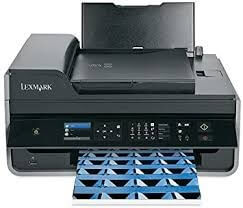
Computer softwareOperating system For software to interface with the hardware and the user, every computer must have an operating system. For instance, the Microsoft Windows operating system is run by the most IBM-compatible computers, but they can also run Linux. And, MacOS is exclusively available on Apple machines. In modern eras, because of its ease of use, a GUI (graphical user interface) operating system such as Windows is utilized by most users. However, in the past time, command-line operating systems were the only option for users that required users to input instructions for each task. Many individuals still use the command line nowadays, especially when connecting to a computer remotely, despite the fact that the graphical user interface (GUI) is the most popular. Program Only an operating system is required for a computer to function correctly. Most users, on the other hand, desire to do much more with their computers. Users can install programs (applications) that allow them to perform practically anything. For instance, users can install a word processor if they have work-related documents, and a spreadsheet could be added to keep track of spending. Files A file contains the operating system, programs, and data, which store on the hard drive. Each file type has its own set of capabilities, and file extensions are used to identify them on a computer. When you open a computer file, the file type is examined by the computer first and either computer executes the software linked with the file type or performs an action. A.txt file, for example, is a text file that can be opened in Notepad and is an executable file that runs a program. Files are structured by putting related files in folders and storing them on hard drives. A file manager, such as file explorer, is used to browse these kinds of directories and files. Shortcuts with program icons are made in order to make it easier to find and access programs on the computer system. You can place these shortcuts anywhere, such as on the desktop of the computer, as well as in the Taskbar. There are many types of files; some extensions are given below: 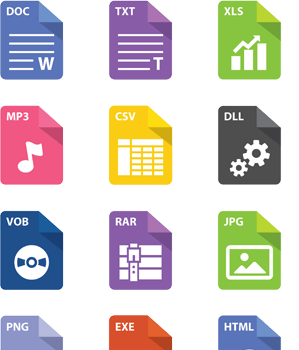
Programming A computer programmer writes all of the software that runs on the computer by using a programming language like C, C++, Java, JavaScript, etc. Programming enables a person or business to tell a computer to perform practically any task or create unique programs. 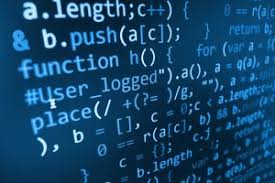
Networks and the InternetNetwork A computer network is a system that allows computers to interact (speak) with one another computers. A LAN (local area network), such as a home network, and a WAN (wide area network), such as the Internet, are the two main types of networks. A network interface card (NIC) is used by computers to interact with other computers, or they interact wirelessly, which connects a switch to a router or a computer to a router. All devices use a protocol in terms of connecting with the network devices, router and other computers. For case, a good example of a network protocol is the TCP/IP protocol. Internet The Internet is a vast network that has the potential to connects billions of computers and other networking devices all around the world. On the internet, the WWW (World Wide Web) is accessed with the help of using a web browser, which allows users to browse various HTML-based websites. Also, you use search engines if you want to locate anything, watch movies, download software, send e-mail, connect with social networking sites, and much more on the Internet. Familiarize yourself with the computer jargon It is not easy to be familiar with every computer phrase; even it would be impossible. However, learning the most common computer words is another excellent method in order to learn more about computers. Computer historyAnother excellent technique to have a better grasp of computers is to study their history and how they have evolved with time. In our computer history section, we have documented thousands of significant events in the computer, which will help you out in order to understand who has made the computer industry what it is today. How to keep up-to-date on computersComputers, their hardware, and the software that runs on them are always changing. You should read computer-related forums, blogs, newsletters, news, and RSS feeds and follow computer users on social networking sites such as Twitter to stay up to speed. Where else to learn about computersFree college courses Free online courses have been made available to the public by many major institutions and schools, which provide a lot of information on computer-related topics. You may receive a similar education if you watch these online as opposed to going to school. Online free books Various computer books and computer-related e-books are available on the internet, which you can download. |
 For Videos Join Our Youtube Channel: Join Now
For Videos Join Our Youtube Channel: Join Now
Feedback
- Send your Feedback to [email protected]
Help Others, Please Share









